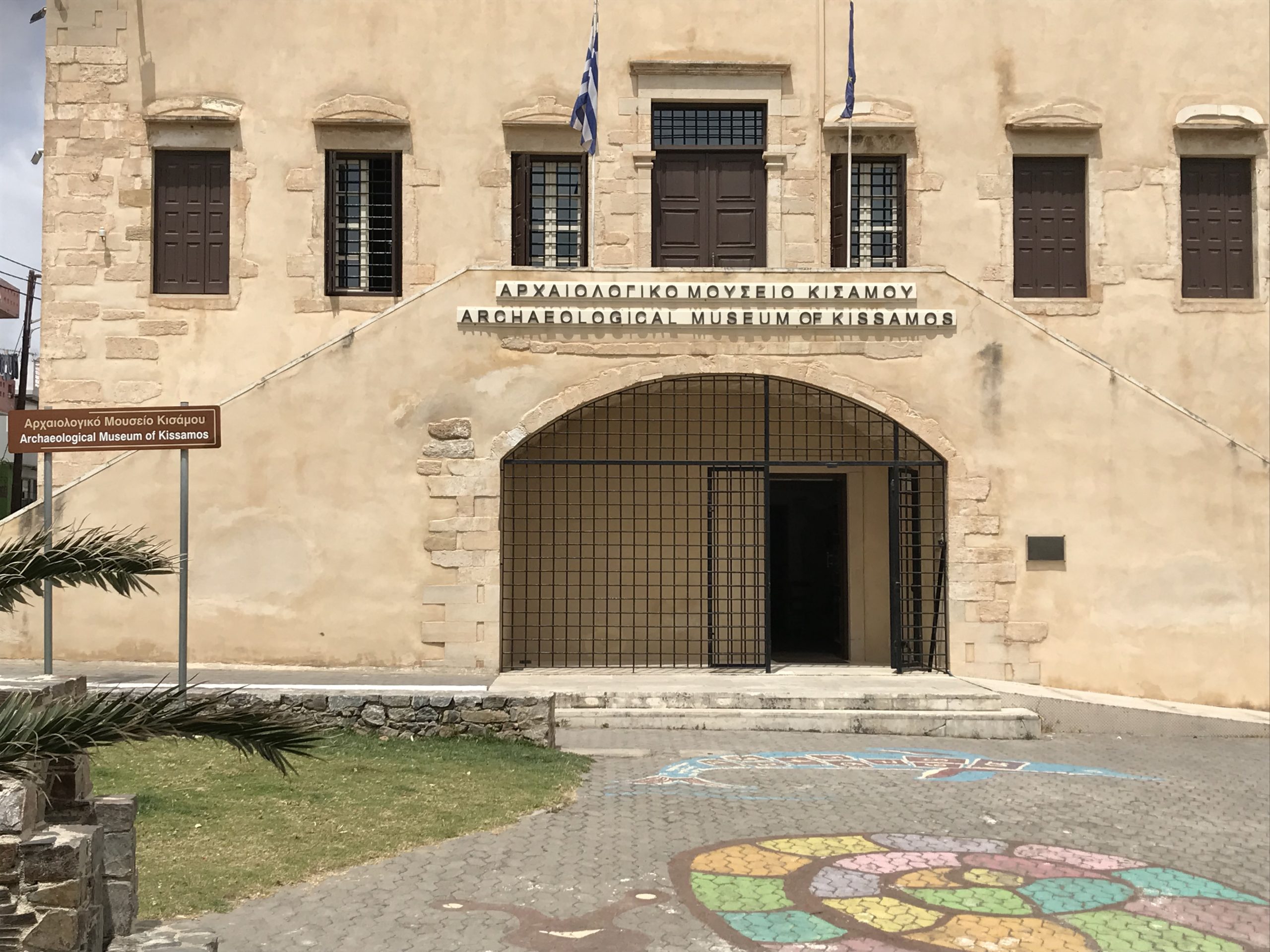
The Archaeological Museum of Kissamos Housed in the old Venetian-Turkish Government House, which was located within the perimeter of the Venetian castle, which was reinforced by the Ottoman Empire. The exhibits provide an enduring image of the history of the region of Kissamos from prehistory to late antiquity, ie. Early Christian times.
The exhibition is divided into sections based on chronological order and local criteria and is distributed between the ground floor and the first floor of the building. The museum provides plenty of information and visual material.
The museum’s entrance is on the ground floor. The exhibition’s rooms are as follows:
Ground Floor
Room 1: Minoan period Drapanias and Nopigia
Room 2: Geometric period of the city-state, Polirinia, Falasarna. These two cities flourished in the Hellenistic period as the mainland and maritime powers respectively.
Room 3: Other cities, pottery style of the Western area of Crete, Hellenistic inscriptions and mostly Roman statues and sculptures.
First Floor
Room 4: City estates – mosaic floors taken from villas, that represent amongst other things The Four Seasons. There is also a sundial and sculptures.
Room 5: Exhibition of the economy, coins and trading items.
Room 6: Everyday life, here are items of daily life, household items made of various materials such as clay, metal and bone. Some of the pottery shows remarkably skilled craftsmanship.
Room 7: Death and its customs, here are funeral gifts from an early 4th Century BC female burial as well as funerary artefacts with inscriptions from the so-called early Christian era – a fascinating insight into the funeral customs of the time and emerging Christianity especially since the 5th Century AD.
How To Get There
The Museum is located at the heart of Kissamos, in the middle of a square with a lot of cafes where after your visit you can enjoy a drink or have lunch.